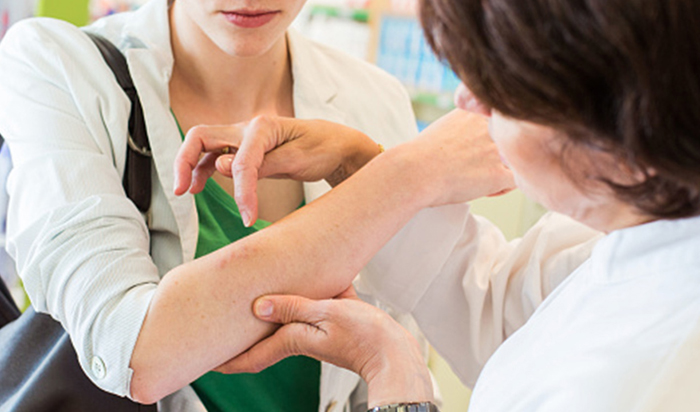
An abscess is a circumscribed collection of pus appearing as an acute or chronic localized inflammation, associated with tissue destruction. A furuncle is an acute, deep-seated, red, hot, tender nodule or abscess that evolves from a staphylococcal folliculitis. A carbuncle is a deeper infection comprised of interconnecting abscesses usually arising in several contiguous hair follicles.
Causes of Abscess, Furuncle, and Carbuncle
Folliculitis, furuncles, and carbuncles represent a continuum of severity of staphylococcal infection. These cutaneous infections arise in chronic S. aureus carriers. Control/eradication of carrier state treats/prevents folliculitis, furuncle, and carbuncle formation.
Symptoms of Abscess, Furuncle, and Carbuncle
- Most often, an abscess becomes a painful, compressible mass that is red, warm to touch, and tender.
- Localized swelling, induration (hardening of tissue)
- Furuncles are seen most often on the back of the neck, face, buttocks, thighs, groin, breast, or in the underarm area.
Diagnosis
Clinical findings confirmed by findings on Gram’s stain and culture.
Treatment
The treatment of an abscess, furuncle, or carbuncle is incision and drainage, and systemic antimicrobial therapy.
Surgery Incision and drainage are often adequate for treatment of abscesses, furuncles, or carbuncles. Scissors or scalpel blade can be used to drain loculated pus in carbuncles; if this is not done, resolution of pain and infection can be delayed despite systemic antibiotic therapy. Dental abscesses are often associated with devitalized tooth pulp, which must be removed or the tooth extracted. All foreign matter must be removed: comedone, keratinaceous debride, foreign body.
Adjunctive Therapy Application of heat to the lesion promotes localization/ consolidation and aids early spontaneous drainage.
Systemic Antimicrobial Treatment In healthy individuals, incision and drainage are often adequate therapy. Systemic antibiotics speed resolution in healthy individuals and are mandatory in any individual at risk for bacteremia (e.g., immunosuppressed patients).
Recurrent Furunculosis Usually related to persistent S. aureus in the nares, perineum, and body folds.
Topical Therapy Shower with providoneiodine soap or benzoyl peroxide (bar or wash). Apply mupirocin ointment daily to the inside of nares and other sites of S. aureus carriage.
Systemic Therapy Appropriate antibiotic treatment is continued until all lesions have resolved. Secondary prophylaxis may be given once a day for many months.
Carrier State Rifampin: 600 mg PO for 7 to 10 days for eradication of carrier state.
Prevention
Individuals subject to repeated furuncle/carbuncle formation can reduce S.aureus carriage by use of an antibacterial soap while bathing. Mupirocin ointment is effective for eliminating nasal carriage.
References